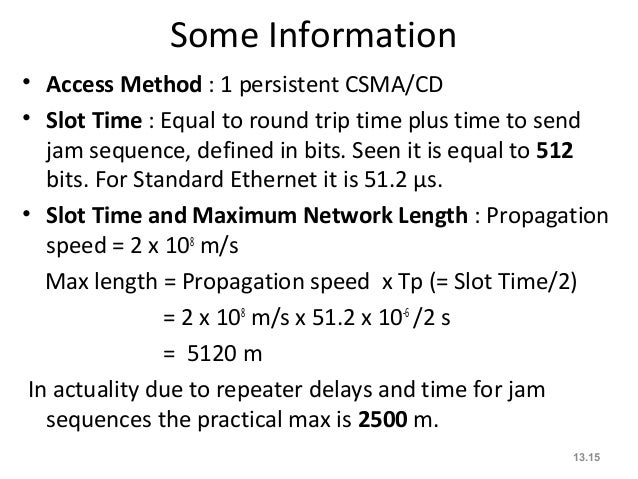In telecommunications, guard intervals are used to ensure that distinct transmissions do not interfere with one another, or otherwise cause overlapping transmissions. These transmissions may belong to different users (as in TDMA) or to the same user (as in OFDM).
Modelling and performance evaluation of the IEEE 802.11 DCF for real-time control. The probability of packet arrival into an empty queue is assumed to be constant in any time slot,. And propagation delay. In a typical real-time control system, each sensor periodically samples the plant under control, and transmits the sampled data to. In this paper, we introduce a comprehensive packet delay analysis for wireless networks based on IEEE 802.11 Distributed Coordination Function (DCF). Performance Analysis of IEEE 802.11 DCF: Throughput, Delay, and Fairness Zhifei Li Department of Computer Science. Slot time with an independent probability τ, and the packet. First, the propagation delay δ is no longer included in the above formula since the Short Inter-Frame Space (SIFS).
The purpose of the guard interval is to introduce immunity to propagation delays, echoes and reflections, to which digital data is normally very sensitive.
Use in digital communications systems[edit]
In OFDM, the beginning of each symbol is preceded by a guard interval. As long as the echoes fall within this interval, they will not affect the receiver's ability to safely decode the actual data, as data is only interpreted outside the guard interval.
In TDMA, each user's timeslot ends with a guard period, to avoid data loss and to reduce interference to the following user, caused by propagation delay. Thus a user's timeslot is protected from interference from the preceding user, by the guard interval (guard period) at the end of that preceding user's timeslot. It is a common misconception that each TDMA timeslot begins with a guard interval, however the ITU Technical Specifications (such as GSM 05.05) clearly define the guard period as being at the end of each timeslot, thus providing protection against data loss within that timeslot, and protection against interference to the following timeslot.
Longer guard periods allow more distant echoes to be tolerated. However, longer guard intervals reduce the channel efficiency. For example, in DVB-T, four guard intervals are available (given as fractions of a symbol period):
- 1/32 ; 1/16 ; 1/8 ; 1/4
Hence, 1/32 gives the lowest protection and the highest data rate; 1/4 results in the best protection but the lowest data rate.
Radio waves propagate at the speed of light, 3 μs per 1000 meter (5 μs/mile). Ideally, the guard interval is just longer than the delay spread of the channel.
802.11 guard interval[edit]

The standard symbol guard interval used in 802.11 OFDM is 0.8 μs. To increase data rate, 802.11n added optional support for a 0.4 μs guard interval. This provides an 11% increase in data rate.
The shorter guard interval results in a higher packet error rate when the delay spread of the channel exceed the guard interval and/or if timing synchronization between the transmitter and receiver is not precise. A scheme could be developed to work out whether a short guard interval would be of benefit to a particular link. To reduce complexity, manufacturers typically only implement a short guard interval as a final rate adaptation step when the device is running at its highest data rate.[1]
802.11 Slot Time Propagation Delays
See also[edit]
References[edit]
Propagation Delays
- ^Perahia and Stacey, Next Generation Wireless LANs, Cambridge University Press, 2008
External links[edit]
- Technical Standard GSM 05.05 Radio Transmission and Reception. Contains descriptions and diagrams of the GSM use of TDMA timeslots, bursts, and guard periods.
- Guard interval and ISI-free OFDM transmission. Online experiment illustrates ISI-free OFDM transmission if guard time is longer or equal to the channel's maximum delay spread.